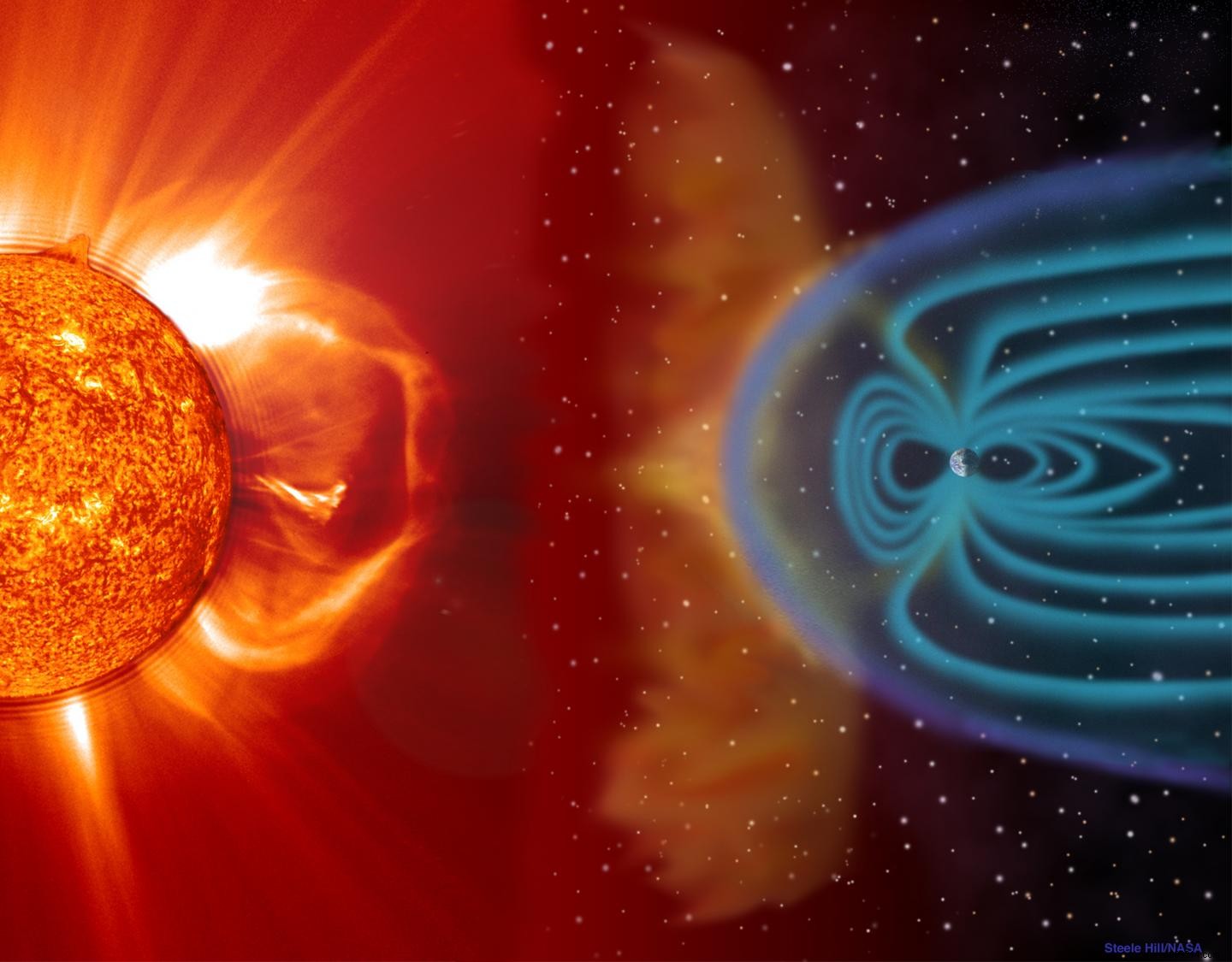Unless shielded by an incredibly powerful magnetic field, no life form could survive the end-of-life stages preceding its star's transition to the planet. dwarf state, according to a study. Life potentially identified on planets orbiting white dwarfs will therefore probably have evolved after the death of its star.
Every second of every day, torrents of solar-forming charged particles crash into our planet. Luckily for us, the Earth's magnetic shield deflects and dismantles a huge portion of these stellar winds, thereby promoting conditions conducive to life on the surface. But the situation is only temporary. According to new research, our planet's magnetic shield will indeed no longer be able to protect us as our star approaches the end.
In a few billion years, our Sun will eventually run out of hydrogen, which fuels nuclear reactions at its core. As a result, the solar core will begin to contract under its own gravity, while the outer layers of the star will begin to expand. Gradually, the Sun will begin to swell more and more , before turning into a red giant .
As it expands, we know that the Sun's outer atmosphere will be large enough to absorb Mercury and Venus , but the Earth could be too. After about a billion years of expansion, our star will collapse into a white dwarf , evolving for a few billion years before the lights go out completely.
In a recent study, researchers from the University of Warwick (UK) asked themselves the following two questions:how will the intensity of the wind evolve solar in the next five billion years, when our star turns into a red orb? And could Earth's magnetosphere survive this cosmic onslaught? For this work, the researchers modeled the winds of eleven different types of stars with masses varying from one to seven times the mass of the Sun.

Researchers have found that as stars increase in diameter towards the end of their lives, the speed and density of the stellar wind fluctuate wildly, alternately expanding and contracting the stars. magnetic fields of all nearby planets, eventually smothering them. Coming back to our system, the solar wind will erode Earth's magnetic shield no matter what, even if our planet manages not to get swallowed up, the authors note.
From here, much of our atmosphere will be stripped , and all life on Earth, if it has managed to survive until then, will be rapidly eradicated .
"We know that solar wind in the past has eroded the Martian atmosphere which, unlike Earth, does not have a large-scale magnetosphere “, explains Aline Vidotto, from Trinity College in Dublin (Ireland). "What we didn't expect to discover is that the solar wind in the future could be so damaging even to planets shielded by a magnetic field “.
According to the researchers, the only way for a planet to maintain its magnetic field throughout these end-of-stellar-life stages would be to provide a magnetic field a thousand times more powerful than that of the Earth .
This research also has implications for the search for extraterrestrial life. Some astronomers believe that white dwarfs could potentially host habitable planets, in part because these "dead" stars do not generate solar winds. So, in view of this new work, if life does indeed exist on an Earth-like planet around a white dwarf, then that life must have evolved after the end of the violent red giant phase of the planet. star.